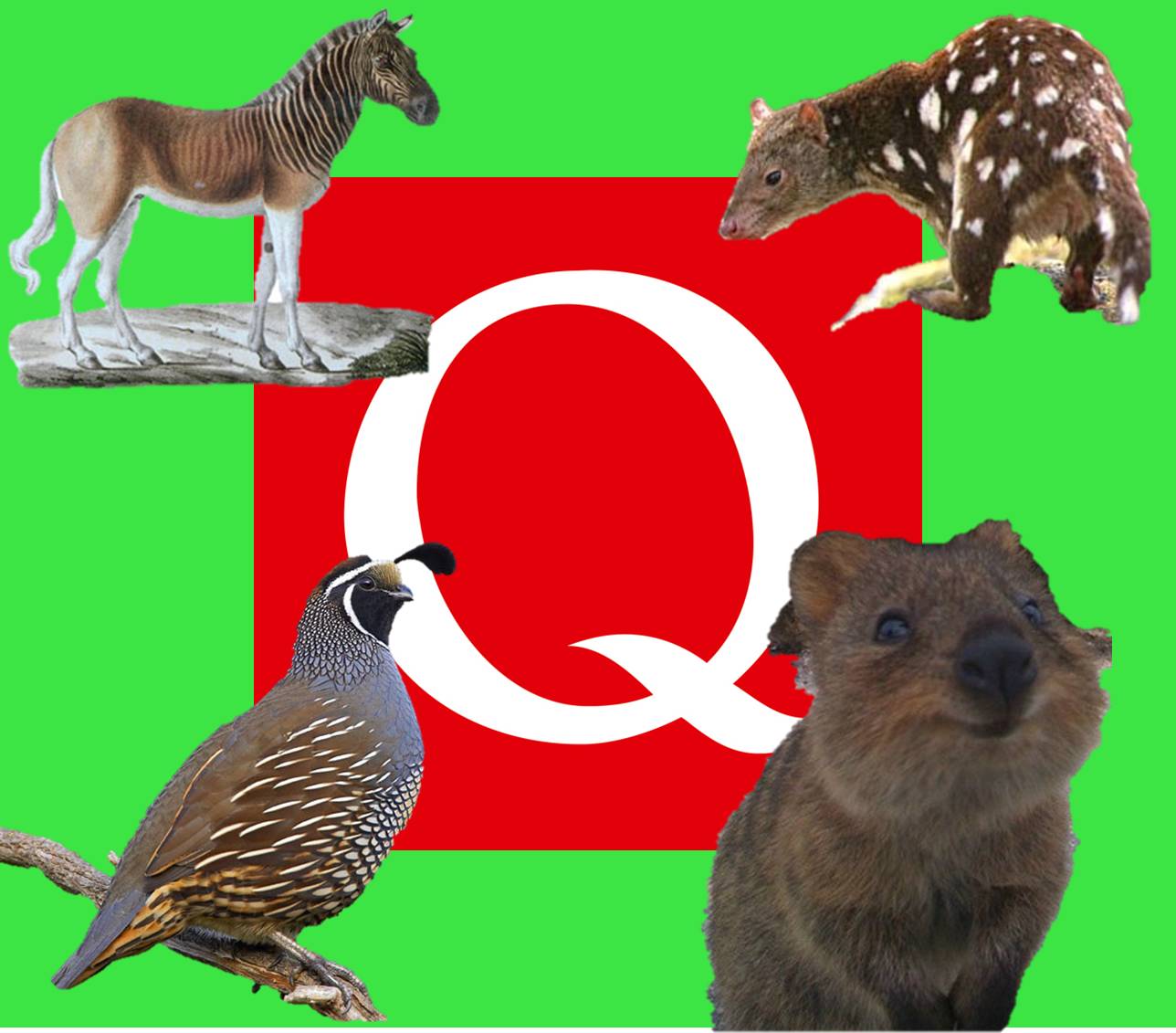When it comes to animals that start with Q, many people may struggle to name even a few. However, this letter is home to some fascinating creatures that are often overlooked. In this article, we will explore various animals whose names begin with the letter Q, providing you with interesting facts and insights about each one. From unique mammals to captivating birds, the animal kingdom is diverse and full of surprises, even in the less common letters of the alphabet.
As we delve into this topic, you will discover not only the names of these animals but also their habitats, behaviors, and other intriguing characteristics. This guide aims to be informative for animal enthusiasts, students, and anyone curious about the diversity of wildlife. By understanding these animals, we can appreciate the rich tapestry of life on Earth.
So, let’s take a closer look at the animals that start with Q, and uncover the hidden gems of the animal kingdom!
Table of Contents
1. Quokka
The quokka is a small marsupial native to Australia, particularly known for its friendly demeanor and adorable smile. These creatures belong to the macropod family, which includes kangaroos and wallabies. Quokkas are often referred to as the "world's happiest animals" due to their cheerful appearance.
Quokkas are herbivores, primarily feeding on grass, leaves, and fruits. They are nocturnal, which means they are most active during the night. One interesting fact about quokkas is that they can survive without drinking water for extended periods, obtaining most of their hydration from the vegetation they consume.
Data and Facts about Quokkas
- Scientific Name: Setonix brachyurus
- Habitat: Forests and shrublands in Western Australia
- Size: 40-54 cm in length
- Weight: 2.5-5 kg
- Conservation Status: Vulnerable
2. Quoll
Quolls are carnivorous marsupials found in Australia and New Guinea. They are known for their distinctive spotted coats and agile hunting abilities. Quolls are solitary animals and are primarily nocturnal, making them adept at hunting small mammals, birds, and insects.
There are four species of quolls: the Eastern, Western, Northern, and Spotted-tailed quoll. Each species has adapted to its environment, showcasing varying behaviors and diets. For instance, the Spotted-tailed quoll is known for its larger size and more aggressive hunting style.
Data and Facts about Quolls
- Scientific Name: Dasyurus
- Habitat: Forests, grasslands, and coastal areas
- Size: 25-75 cm in length depending on the species
- Weight: 1-7 kg
- Conservation Status: Varies by species, some are endangered
3. Quail
Quails are small game birds that are found in various regions around the world. They are known for their distinctive call and are often found in grasslands, forests, and shrublands. Quails are ground-dwelling birds that prefer to run rather than fly, although they are capable of short bursts of flight when threatened.
There are several species of quail, including the Bobwhite quail and the California quail, each with unique characteristics and adaptations suited to their environments. Quail are also popular in hunting and as domesticated birds, valued for their eggs and meat.
Data and Facts about Quails
- Scientific Name: Coturnix
- Habitat: Grasslands, forests, and agricultural areas
- Size: 15-30 cm in length
- Weight: 100-200 g
- Conservation Status: Least concern for many species
4. Quokka's Habitat
Quokkas primarily inhabit small islands and coastal regions of Western Australia, including Rottnest Island. Their habitat consists of dense vegetation, which provides them with food and shelter. The quokka's ability to thrive in harsh environments has made them a resilient species.
Conservation efforts are crucial for the quokka's survival, as their populations have been affected by habitat loss and predation from introduced species, such as foxes and cats. Protecting their natural habitat is essential for maintaining their population and ensuring they continue to be a beloved species.
5. Quoll Overview
Quolls inhabit a variety of environments, including forests, grasslands, and urban areas. Their adaptability allows them to thrive in different ecosystems. However, quolls face threats from habitat destruction, road accidents, and competition with invasive species. Conservation programs are essential to protect this unique marsupial and its habitat.
Efforts to conserve quoll populations often involve habitat restoration, public awareness campaigns, and monitoring of populations in the wild. By understanding the challenges they face, we can work towards ensuring their survival for future generations.
6. Quail Characteristics
Quails exhibit various physical traits that distinguish them from other birds. They have short, rounded bodies, with a distinctive plume on their heads. Quails are known for their social behavior, often forming large flocks during the non-breeding season.
Breeding season for quails typically occurs in the spring and summer months, during which males display their vibrant plumage and perform elaborate courtship dances to attract females. Quail eggs are laid in shallow nests on the ground, and both parents often take part in raising the young.
7. Quokka Conservation
Conservation efforts for quokkas involve habitat protection, reducing predation by invasive species, and raising awareness about their vulnerable status. Organizations and volunteers work to create safe environments for quokkas and monitor their populations.
Public awareness campaigns encourage responsible tourism and educate visitors about the importance of protecting these charming marsupials. By supporting conservation efforts, we can help ensure that quokkas continue to thrive in their natural habitats.
Conclusion
In conclusion, the animal kingdom is filled with fascinating creatures that start with the letter Q, such as the quokka, quoll, and quail. Each of these animals has unique characteristics, habitats, and conservation needs that highlight the diversity and complexity of wildlife. Understanding and protecting these species is crucial for maintaining biodiversity.
We encourage you to share your thoughts about these animals in the comments below. If you enjoyed this article, consider sharing it with others or exploring more articles on wildlife and conservation on our site.
Thank you for visiting, and we hope to see you again soon!


